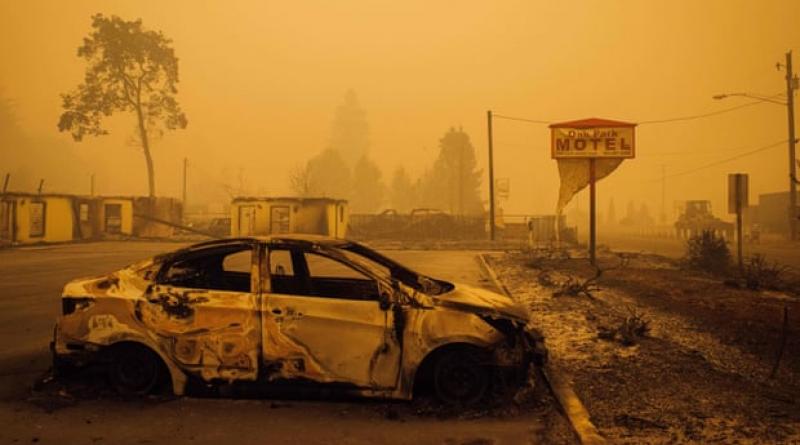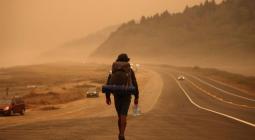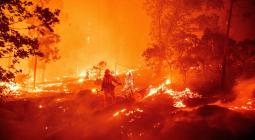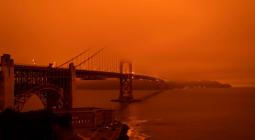Wildfires are striking closer and closer to cities. We know how this will end.

The climate crisis is a factor, but so are efforts to fight fires - which have had the opposite effect.
We call them wildfires, but that might not be the right word any more.
In recent days, at least five whole towns have been destroyed by fire in Oregon. So has much of Malden, Washington, and swathes of Big Creek and Berry Creek, both in California.
To many people this will seem like deja vu. In 2018, another town was also wiped off the map, in the most dramatic recent example of this horrible genre. Paradise, California, was much larger, home to 27,000, and it was destroyed in just a few hours. Eighty-five people were killed.
The places now being ravaged are not forests or chaparral located somewhere out there, in the wilds. Instead the current wildfires demonstrate how easy it has become for fires to invade our suburbs and towns, with their 7-11s, gas stations and doctors’ offices, and lay them to waste. Where will this end? The prospects are disturbing.
To understand how we got here, it is important to know that we have come to expect control over such conflagrations relatively recently. Prior to European settlement in the West, fire flowed freely, sparked by lightning or intentionally by Native Americans to encourage the growth of favored plants or clear areas for easier hunting. As much as 4.5m acresof California’s 105m acres might burn every year. These low-intensity fires did not kill large trees, and some plants even came to depend on fire to regenerate themselves. A shrub called chamise appears to encourage fire by releasing combustible gases in the presence of flames.
The shift to a different approach occurred after several instances in which wildfires became appalling urban fires. In October 1871, railway workers sparked a brush fire in northern Wisconsin, which swept into the city of Peshtigo and killed 1,500 people there and elsewhere across a gargantuan footprint of 1.2 million acres. And in the great fires of 1910, fires burning across several Western states killed hundreds and razed a number of towns. People escaped by train as the fires virtually licked at their heels.
After this the US sought to suppress all wildfires before they could gain a foothold. In the 1930s, the US Forest Service instituted its so-called 10am policy, according to which fires had to be stamped out by that time the next day. Later came the “10-acre policy”, dictating that fires should not be permitted to grow beyond that size. Fire was the enemy, an idea catalyzed by wartime imagery of firebombed cities such as Dresden, Hamburg and Tokyo. Smokey Bear helped to reinforce it, too.
This strategy had a pronounced effect – though not necessarily in ways that were intended. Fire activity decreased, it is true, but with scouring flames removed from the environment, forests grew far denser and brushier than they had been before. In one Arizona forest, 20 trees per acre became 800 trees per acre. These forests can and will burn more severely. In addition the climate crisis is rendering vegetation ever drier, and by 2050 up to three times more acreage in Western forests will burn as a result of global warming. Meanwhile60m homes can now be found in or close to high-risk areas where wildfires have previously burned.
Cue urban fires. The fire that obliterated Paradise on the morning of November 8, 2018 was sparked in a rural river canyon several miles to the east of town. As we describe in our new book, Fire in Paradise: An American Tragedy, it approached the community at speeds previously thought impossible, chewing through almost 400 American football fields’ worth of vegetation per minute. It hit like a hurricane. Strikingly, many of the hundreds of thousands of trees in the town were spared – it was the homes that became matches setting fire to the next. The fire was so quick, so hot, that people died seeking shelter under their cars, in the driveways of their homes while holding a hose, or huddled in their bathtub.
Lincoln Bramwell, the chief historian of the US Forest Service, told us that the story of Paradise “reads like these accounts from the late 19th century”, of fires like Peshtigo, back before we had sought to bring wildfire under our command. “I see us going back to the future,” he added. “Going back to a time when fire was not under our control.”
As Americans in California, Washington and Oregon are discovering, wildfires do not only impact the wilderness. Towns and suburbs are not inviolate. With so many of our Western paradises now under threat, experts are begging us to bring controlled fire back into the ecosystem in the form of prescribed burns. To ensure buildings meet stringent fire codes. And to prepare city evacuation plans so we do not repeat the gridlock in which many of those escaping Paradise were trapped. We must, it almost goes without saying, get a handle on the climate crisis.
Witnessing the urban fire in Paradise, some of those we interviewed for our book no longer thought it fanciful that a fire that could maraud into the very heart of a major city, such as Los Angeles, San Diego or the communities of the San Francisco Bay.
University of California scientist Faith Kearns recounted to us that she lives in the Berkeley flatlands, in a part of the Bay that is as thoroughly urbanized as can be. Suddenly she was considering the prospect that a fire might one day reach her home.
“My neighborhood is full of Victorians. My neighbor’s window is about six feet away from my own…” she said, pausing in thought. “I think we’ll see it. I think we’ll see it.”
-
Alastair Gee and Dani Anguiano are the authors of Fire in Paradise: An American Tragedy, available from WW Norton. Read an excerpt here
12 September 2020
The Guardian





